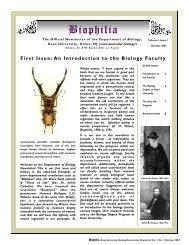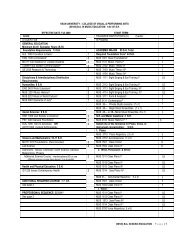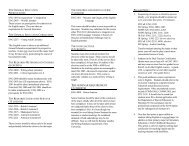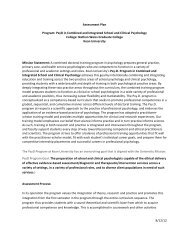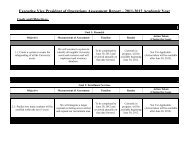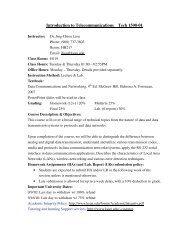GeorGe SeGal - Kean University
GeorGe SeGal - Kean University
GeorGe SeGal - Kean University
You also want an ePaper? Increase the reach of your titles
YUMPU automatically turns print PDFs into web optimized ePapers that Google loves.
Art News 1968<br />
10<br />
long, houses a workshop and numerous, incongruous plaster inhabitants.<br />
Segal began as a painter. In the late ’50s, his friendship with Allan Kaprow, who was then teaching<br />
nearby at rutgers university (robert Whitman and Lucas Samaras were students and roy<br />
Lichtenstein was teaching at Douglass college), played an important role in his development. Segal<br />
later became acquainted with claes oldenburg, red Grooms and other artists centered around the<br />
Hansa Gallery, and had his first show at the Green Gallery, like Hansa under the direction of Dick<br />
Bellamy. From the beginning plaster people were his trademark.<br />
In his recent works, after a venturesome but unprofitable side-trip into painted figures and allegory,<br />
Segal achieves a balance that is post-Pop, post-painterly and pre-apocalyptic. In short, by combining<br />
aspects of several different categories—painting vs. sculpture, presentation vs. representation, art vs.<br />
life—he has managed a significant statement about both art and life.<br />
one can find much to praise in his careful contrasts between real (presented) objects and made<br />
(represented) figures: plaster bodies in contrast to wood, rattan, glass and even daylight. His mediamix<br />
is canny. Subway uses moving lights to suggest the motion of a subway car between stops.<br />
the blinking PArK sign in Parking Garage, a major piece in the Janis show, is perfect. His sense<br />
of composition, although arrived at through an anti-compositional stance, is classic without being<br />
rigid or cold.<br />
In his new works, Segal re-introduces the self-portrait. Self-Portrait with Head and Body depicts<br />
Segal himself in the act of placing a plaster head upon a plaster body. the figure is the same one<br />
employed in a finished state in Girl Sitting against Wall, notable for its almost supremist severity of<br />
composition. Artist in Studio shows Segal or the plaster ghost of Segal in the act of drawing two<br />
models (also plaster). the tableau is backed up by a wall on which a series of large drawings are<br />
displayed. With these two pieces Segal manages to create works of art that are about themselves<br />
in a new and very complicated way.<br />
Artist in Studio is illuminating because it reveals the central formal issue of Segal’s work—until<br />
now disguised by the shock of his commonplace subject matter. For Segal, the concept of “boundary”<br />
is crucial. He not only makes choices involving model (mold), pose and suggestive environmental<br />
fragments, but also major decisions about boundaries. Where will a piece end? How much is just








